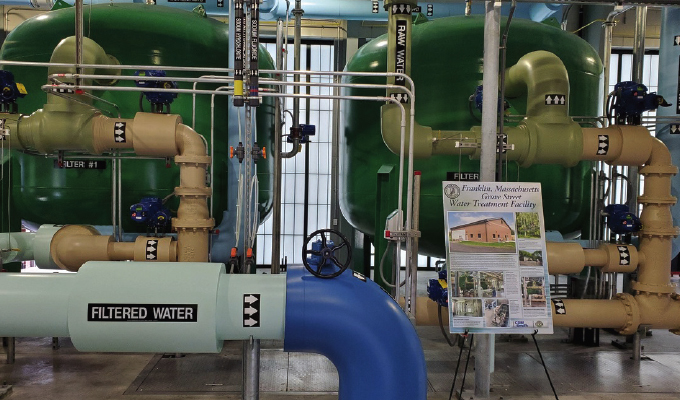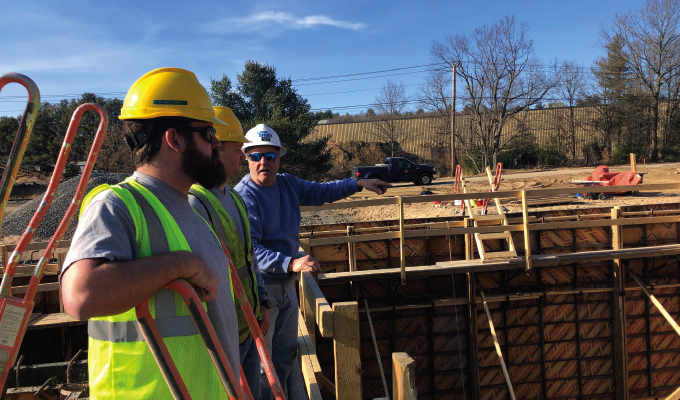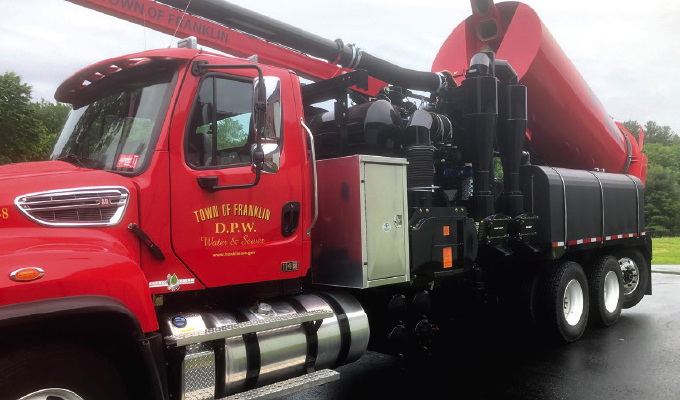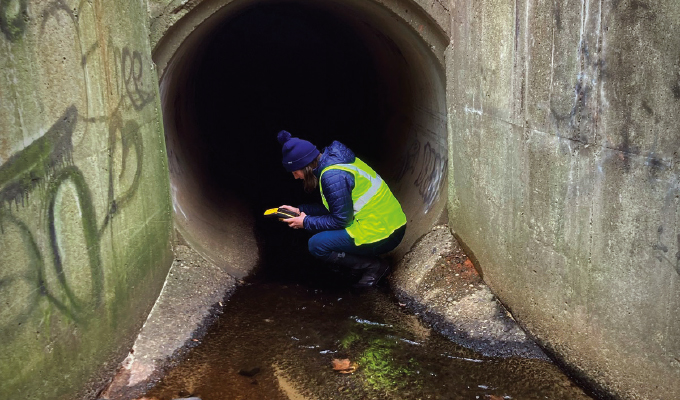The town of Franklin, Massachusetts, has an approximate population of 35,000 residents and a full-service Department of Public Works to manage everything from water and waste, to streets and highways, parks, and everything in between. Like most utilities today, Franklin Public Department of Works (FDPW) is in the process of a digital transformation. It started some years back with a web-based work order system that was used primarily to log customer complaints and requests. The information was kept in either spreadsheets, on paper or simply through verbal communication. Like most journeys, FDPW realized they needed to change course as they were collecting lots of information, but were not able to leverage the information to streamline daily workflows.
“As one would imagine,” Kate Sjoberg, GIS coordinator for the town of Franklin, says, “sometimes the information was not given to the correct person or was lost in the shuffle, which meant a repair did not happen or a necessary improvement did not make it into a plan. To really take advantage of data collection, it needs to be delivered to the right person and packaged as an actionable insight, like a work order, or an alert for further action.”

CENTRALIZING CONTROL OF ASSETS IN ONE PLATFORM
The town of Franklin operates eight booster pump stations, six water storage tanks, twenty-three pump stations, over 2,000 hydrants, 157 miles of water main, and approximately 9,000 water services. The sanitary sewer system has 137 miles of sewer pipe, in excess of 3,400 manholes, and all these assets, including 1,800 streetlights and signage, are accounted for in Sedaru. All stakeholders have access to the platform from any connected device. Work orders are assigned, scheduled, and tracked in the Sedaru platform, giving field crews timely information on those assets that may include a level of urgency, GIS location, installation date, product specs, maintenance history, images, and more.
“Sedaru is a tremendous asset for the team to use in the field,” adds Derek Adams, Frankin’s stormwater and environment affairs superintendent. “It allows staff to quickly and accurately identify asset ownership, pipe orientation, manhole location and historical data. Examining data prior to ‘breaking ground’ on a job site allows the appropriate crew to commence the work. Additionally, the ability to visualize spatial relationships with other town-owned utilities reduces unexpected surprises.”
The field crew digitally records the work that was done and can add any missing asset information to build record-keeping or add images if warranted, all while in the field. This gives real time results to administrators and managers enabling them to analyze asset performance or worker productivity, and spot meaningful trends that can help with long-term planning.

GOOD OPERATIONAL DATA KEEPS STORMWATER FLOWING
Franklin’s Stormwater Division inspects the functionality of each detention basin/rain garden annually and measures vegetative growth, clearance of intake pipe, headwall location, and other key concerns. Sedaru helps collect and visually organize this data so that it is easy to analyze, track, and generate work orders. The information is then prioritized into a maintenance schedule that helps mitigate potential hazards before they become a threat.
Adams adds, “The town has dedicated significant time and energy into locating, retrofitting, constructing, and maintaining stormwater assets. Our stormwater network includes over 10,000 data points: catch basins, drain pipes, culverts, detention basins, tree wells, stormceptors, and more. Sedaru enables us to organize all this information in a meaningful way.”
One of the most important functions for the Stormwater Division is operating an efficient catch basin cleaning program as environmental permitting requires that catch basin sediment levels do not exceed 50 percent of the basin capacity. Therefore, a baseline level of capacity must be determined for each of the 5,700 catch basins. This data is also collected in Sedaru and analyzed by the stormwater team to identify and schedule work orders for cleaning and any necessary structural repair. This program has significantly reduced stormwater contamination, and over time the associated workable data will ensure environmental compliance.

LOOKING FORWARD
One of the most valuable benefits of cloud native software is that it makes the digital journey infinite. FDPW has room to grow and is exploring the possibility of expanding more assets into customized maintenance and inspection programs to streamline operations. There is also the ability to expand modeling capabilities using a digital twin and build in robust predictive asset replacement plans.
The town of Franklin has been evolving its operational and asset management using the Sedaru platform for five years. “Hours and hours have been saved by our shift to Sedaru—not only for our administrative and management staff but also our field crew,” says Sjoberg.
Like most utilities that are experiencing a turnover in a largely aging workforce, the town of Franklin sees the new generation of hires naturally embracing digital technology to further optimize municipal operations.
Kurt Ferrell is account executive team lead for Aquatic Informatics. Ferrell and his team work with utilities to find solutions that optimize asset and work order management for water distribution, wastewater collection, and public works system using the latest data management technologies. For more information, visit www.aquaticinformatics.com.
MODERN PUMPING TODAY, June 2022
Did you enjoy this article?
Subscribe to the FREE Digital Edition of Modern Pumping Today Magazine!


